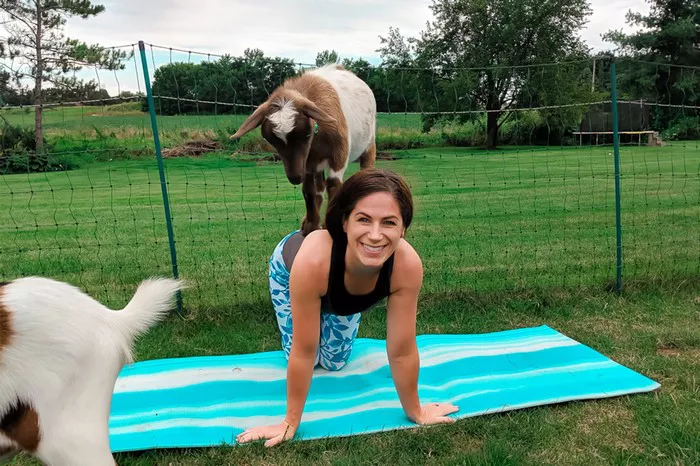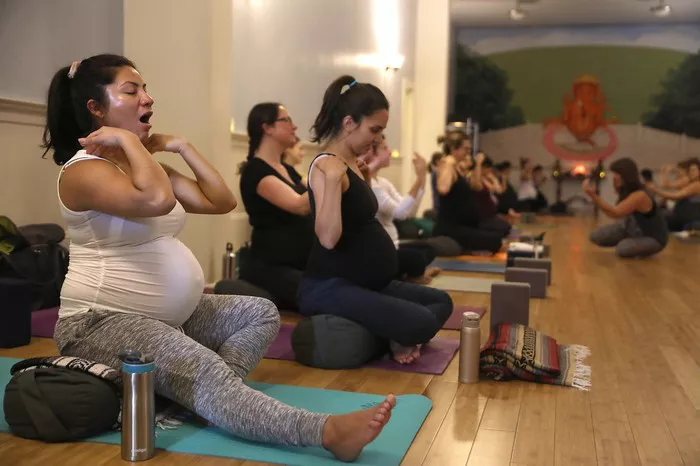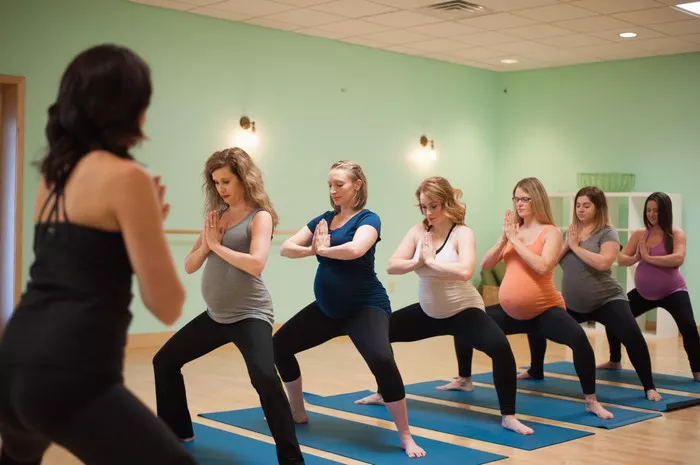In recent years, a novel trend has emerged in the realm of fitness and wellness, captivating enthusiasts around the globe with its unique blend of yoga and animal therapy. Originating in the United States, goat yoga has swiftly gained popularity, drawing participants seeking not only physical exercise but also emotional rejuvenation and an unconventional connection with nature. This article delves into the phenomenon of goat yoga, exploring its origins, benefits, and the growing community that surrounds it.
Origins and Evolution
The inception of goat yoga can be traced back to 2016 when Lainey Morse, a freelance photographer from Oregon, organized the first session on her farm. Morse’s inspiration stemmed from her own experiences with goats, finding solace and joy in their presence. Combining her passion for yoga with her love for these animals, Morse created an innovative concept that would soon capture the imagination of people worldwide.
The premise of goat yoga is simple yet captivating: practitioners engage in traditional yoga poses while miniature goats roam freely around them. The interaction between humans and animals adds an element of unpredictability and amusement to the practice, creating a playful and lighthearted atmosphere.
Since its humble beginnings, goat yoga has evolved into a global phenomenon, with classes offered in various countries across North America, Europe, and beyond. What started as a grassroots movement has now become a mainstream trend, attracting individuals of all ages and backgrounds.
The Experience of Goat Yoga
Participating in a goat yoga session offers a multifaceted experience that transcends the boundaries of traditional exercise routines. The presence of goats introduces an element of mindfulness and spontaneity, encouraging practitioners to embrace the present moment and let go of stress and tension.
As participants flow through yoga poses, goats may wander among them, nuzzling, bleating, or even climbing onto their backs. Far from being a distraction, these interactions foster a sense of connection and joy, eliciting laughter and smiles from both yogis and goats alike.
Moreover, the therapeutic benefits of animal-assisted activities are well-documented, with studies indicating that interacting with animals can reduce stress, anxiety, and blood pressure while promoting feelings of relaxation and well-being. In the context of goat yoga, the presence of these friendly creatures enhances the overall experience, creating a harmonious blend of physical activity and emotional support.
Physical Benefits
Beyond the emotional and psychological aspects, goat yoga offers numerous physical benefits that contribute to overall health and well-being. Like traditional yoga, it improves flexibility, strength, and balance, enhancing muscular endurance and joint mobility.
The dynamic nature of goat yoga poses challenges practitioners to adapt and adjust, engaging stabilizing muscles and enhancing proprioception. Additionally, the presence of goats introduces an element of unpredictability, requiring participants to remain focused and present throughout the practice.
Furthermore, the laughter and joy elicited by goat interactions stimulate the release of endorphins, neurotransmitters that promote feelings of happiness and reduce pain perception. This natural mood enhancement adds an extra dimension to the physical benefits of goat yoga, leaving participants feeling invigorated and revitalized.
Community and Connection
One of the most remarkable aspects of goat yoga is its ability to foster a sense of community and connection among participants. Whether attending classes alone or with friends, individuals come together to share in the experience, forming bonds forged through laughter, shared challenges, and a mutual love for goats.
The inclusive nature of goat yoga welcomes individuals of all fitness levels and backgrounds, creating an environment free from judgment or competition. Participants support and encourage one another, celebrating progress and embracing the journey of self-discovery and personal growth.
Moreover, many goat yoga instructors emphasize the importance of mindfulness and gratitude, encouraging participants to cultivate awareness and appreciation for the present moment. This mindful approach extends beyond the yoga mat, enriching daily life with a greater sense of presence and mindfulness.
The Future of Goat Yoga
As the popularity of goat yoga continues to soar, its future appears promising, with new opportunities for growth and innovation on the horizon. Beyond traditional yoga classes, goat yoga experiences have expanded to include special events such as corporate team-building retreats, birthday celebrations, and even weddings.
Additionally, goat yoga has garnered attention from the tourism industry, with farms and wellness centers offering immersive retreats and vacations centered around the practice. These retreats provide participants with the opportunity to escape the hustle and bustle of daily life, reconnect with nature, and rejuvenate their minds, bodies, and spirits.
Furthermore, the therapeutic potential of goat yoga has prompted research into its effects on mental health and well-being, with preliminary studies suggesting promising results. As interest in alternative forms of therapy continues to grow, goat yoga may emerge as a valuable adjunctive treatment for stress-related disorders and mood disturbances.
Conclusion
In conclusion, goat yoga represents a harmonious fusion of fitness, mindfulness, and animal therapy, captivating enthusiasts worldwide with its playful charm and therapeutic benefits. As the trend continues to evolve and expand, goat yoga stands poised to inspire and uplift individuals seeking holistic wellness and authentic connection in an increasingly fast-paced world.
FAQs:
Who should practice goat yoga?
Goat yoga is suitable for anyone looking for a unique and fun way to practice yoga. It’s particularly popular among those who enjoy animal interaction and want to add an element of playfulness to their yoga routine. While it can be enjoyed by people of all ages and fitness levels, it’s important to consider any potential allergies or sensitivities to animals before participating.
How long does it take to do goat yoga?
The duration of a goat yoga session typically ranges from 45 minutes to an hour. However, this can vary depending on the instructor and the specific class format. Sessions often include a mix of traditional yoga poses and playful interactions with the goats, allowing participants to enjoy both the physical and emotional benefits of the practice.
Is goat yoga for beginners?
Yes, goat yoga can be suitable for beginners. Many classes are designed to accommodate individuals who may be new to yoga, offering modifications for different skill levels. The presence of goats can also help to alleviate any feelings of self-consciousness or performance pressure, creating a relaxed and enjoyable environment for beginners to explore yoga at their own pace.














